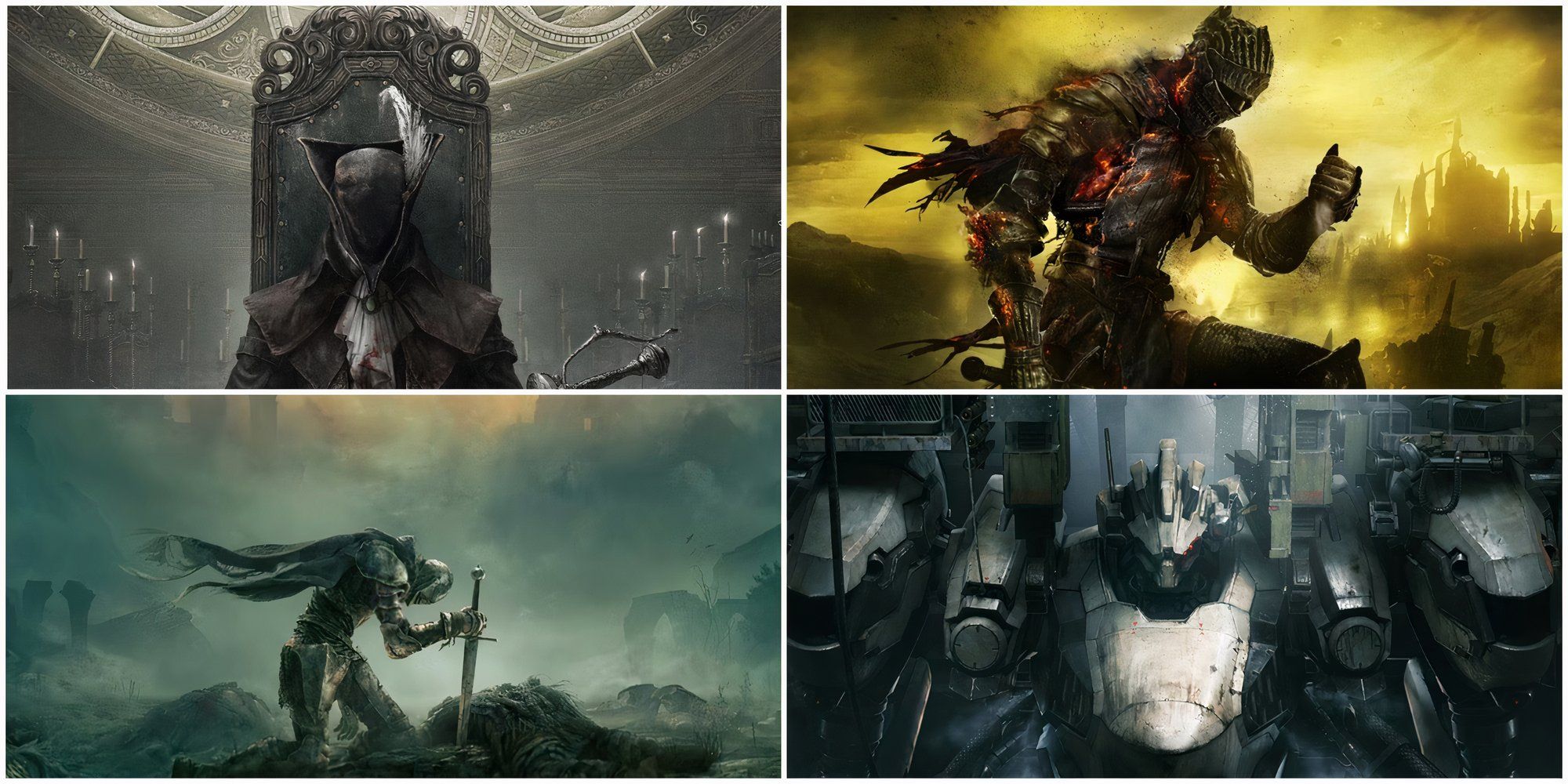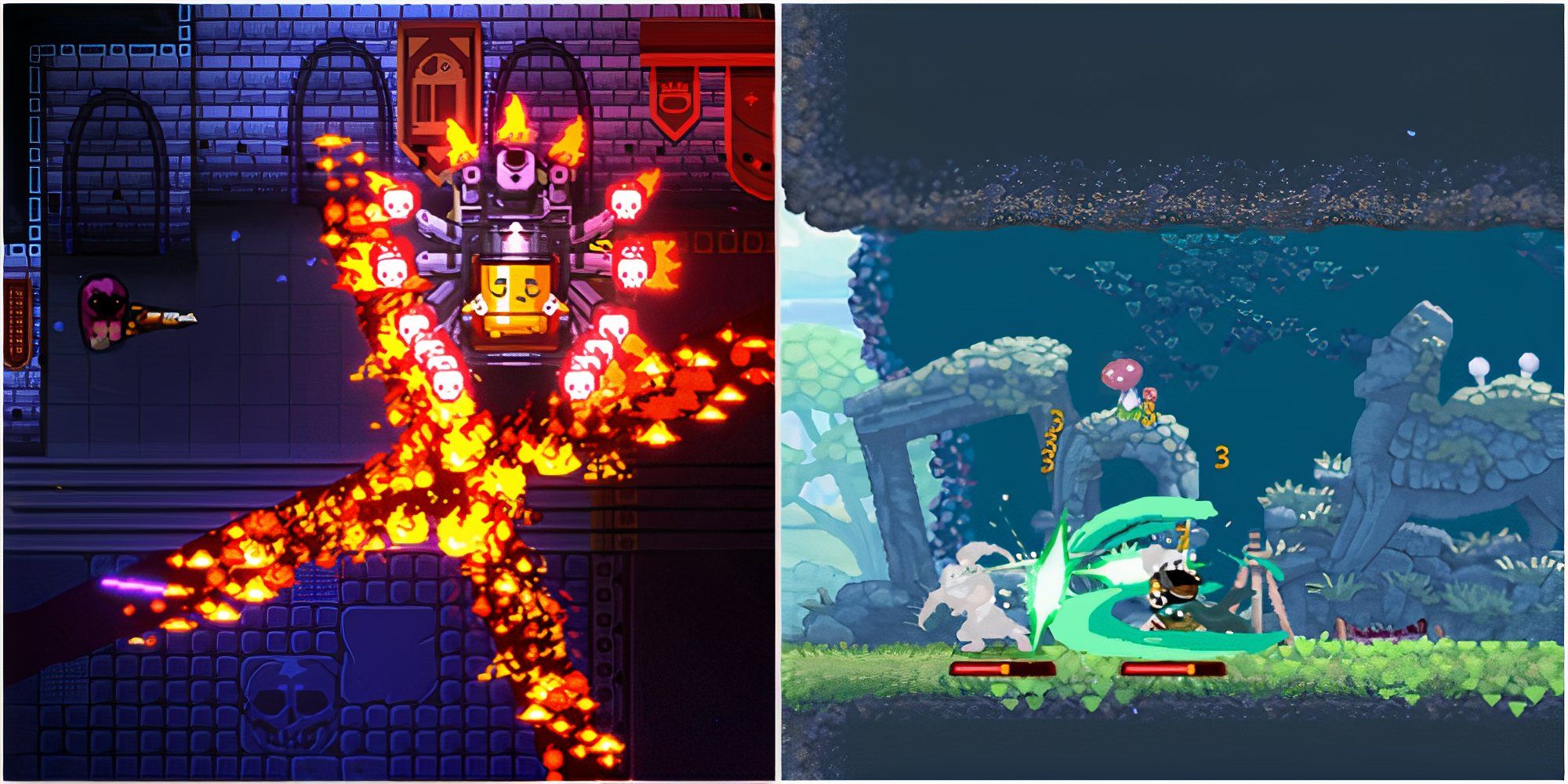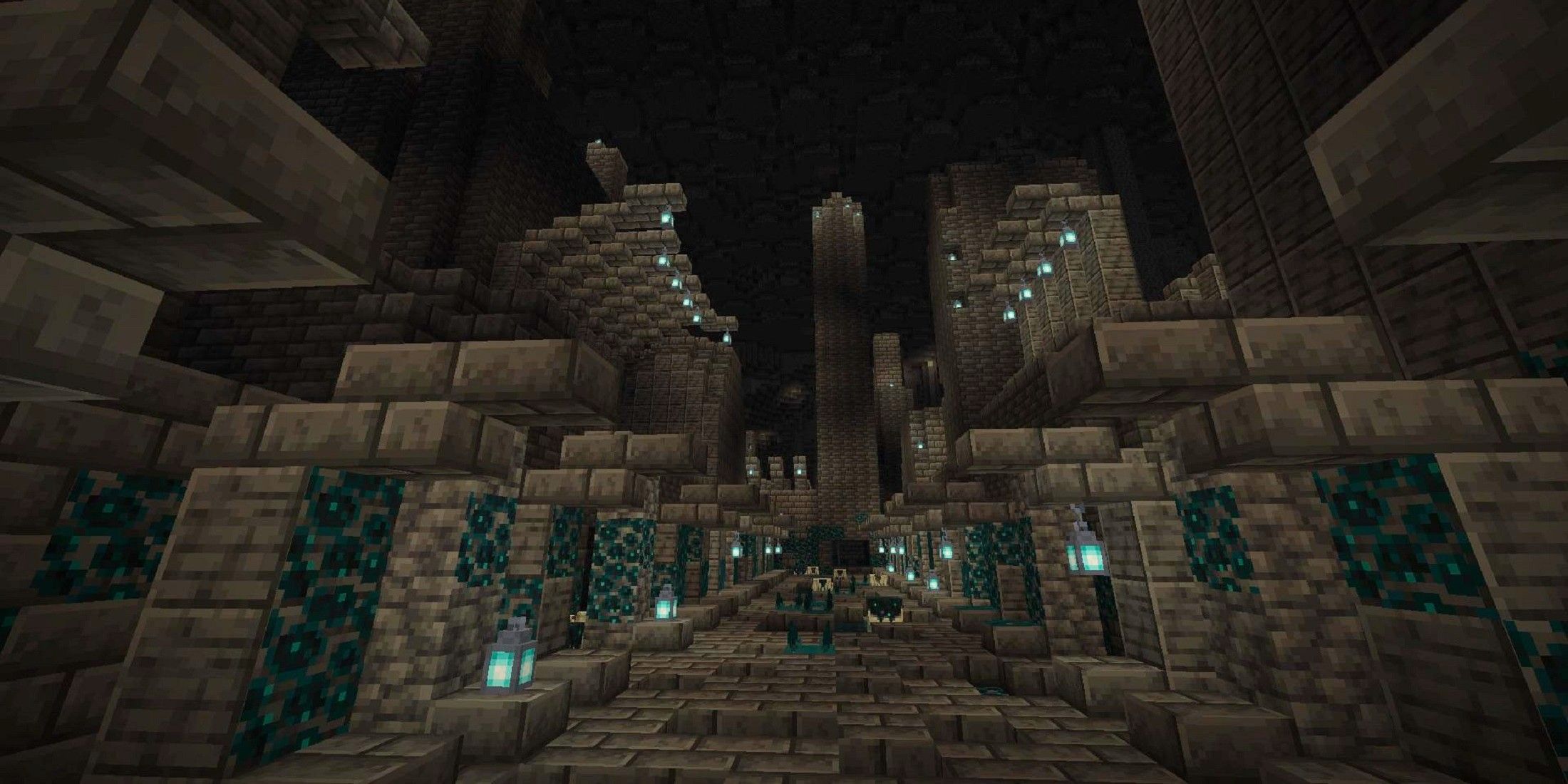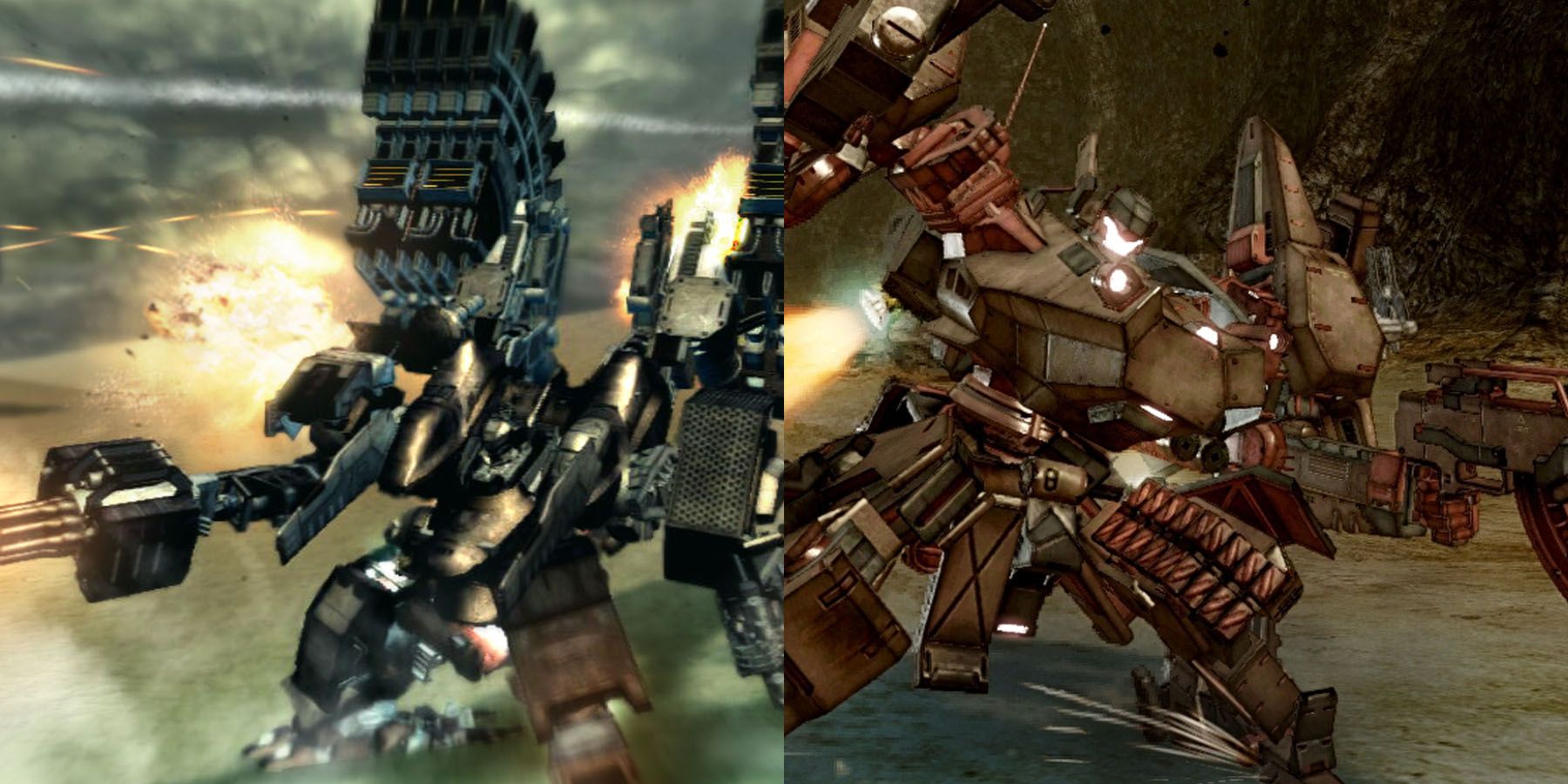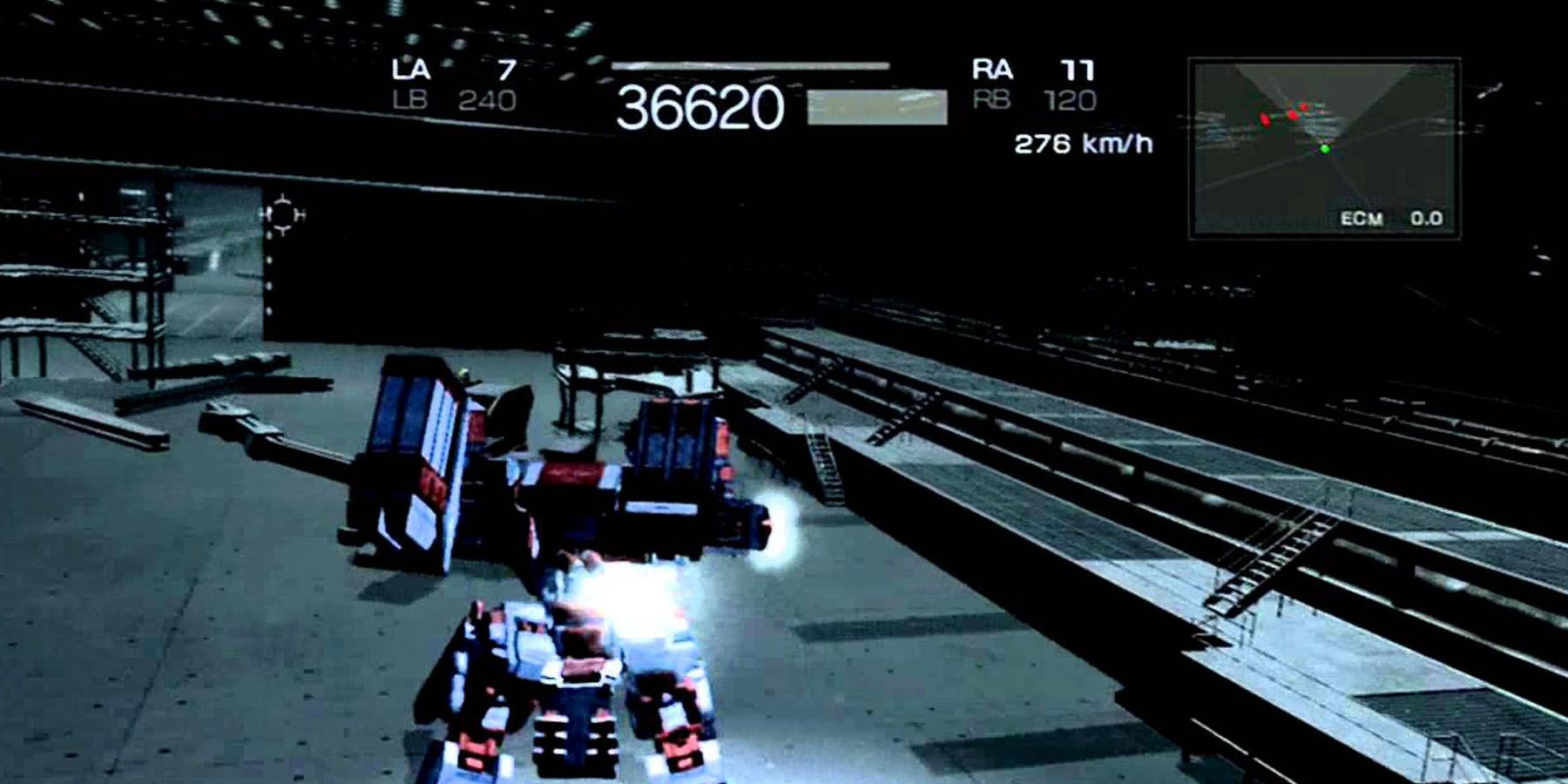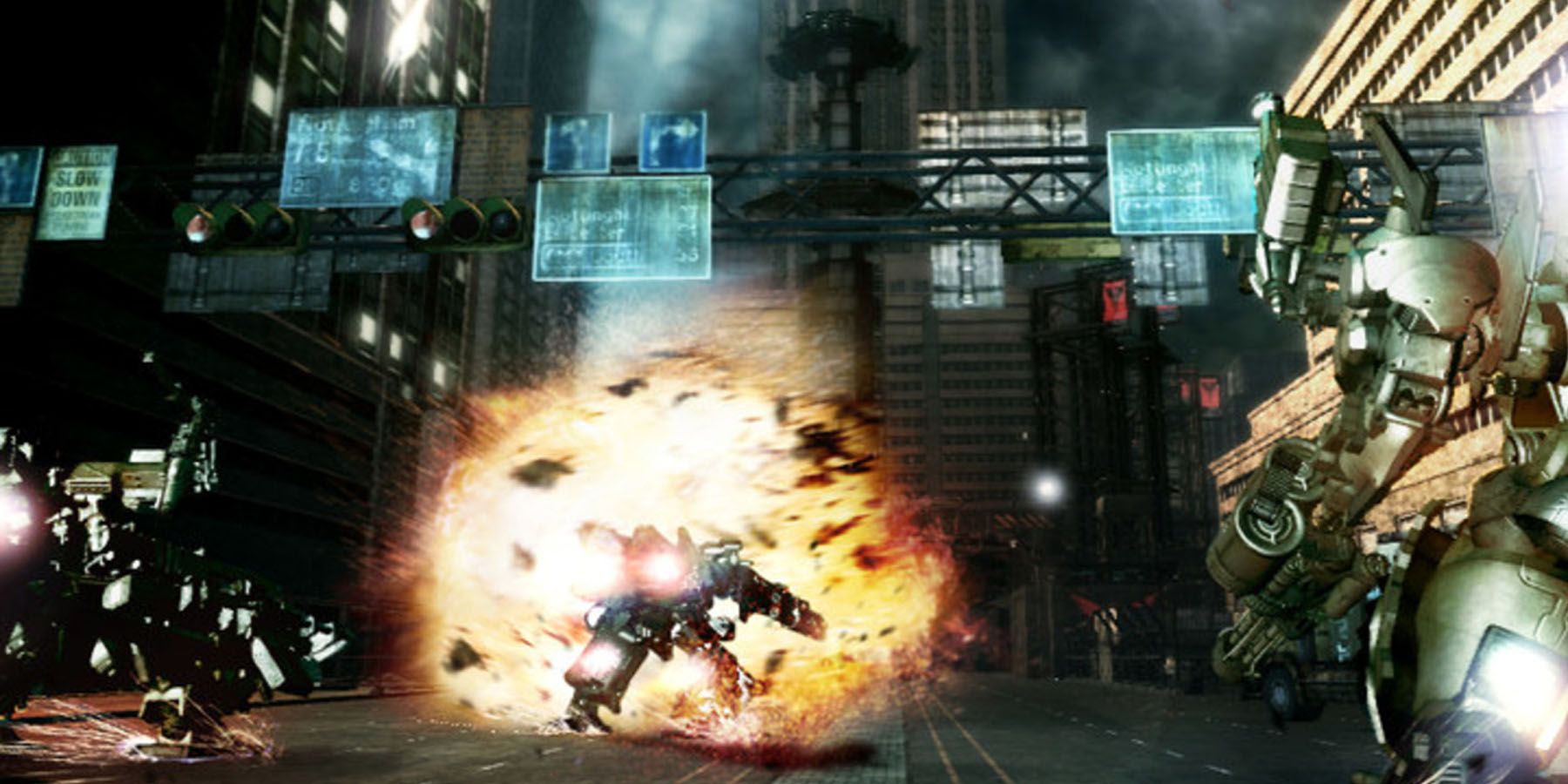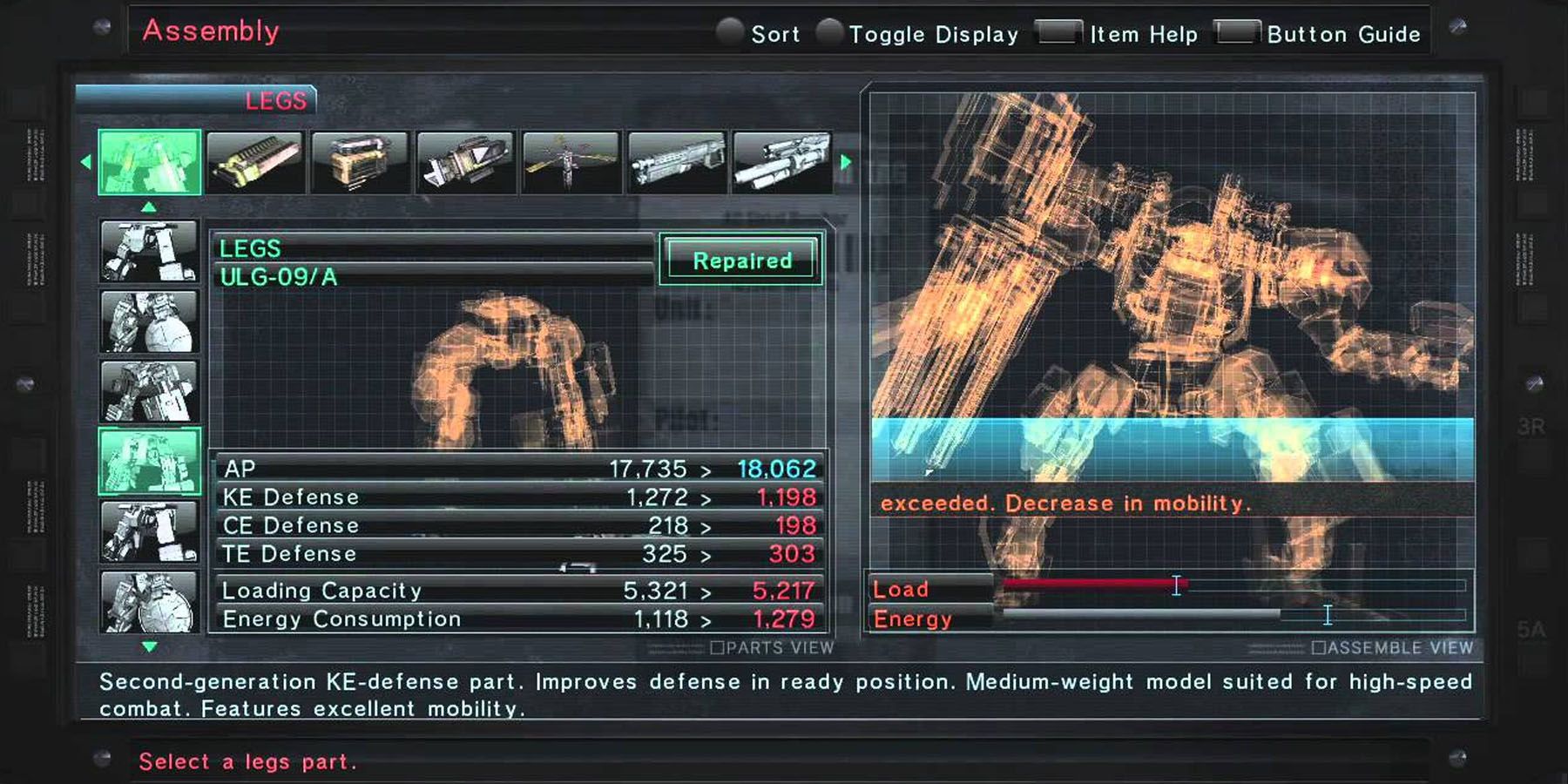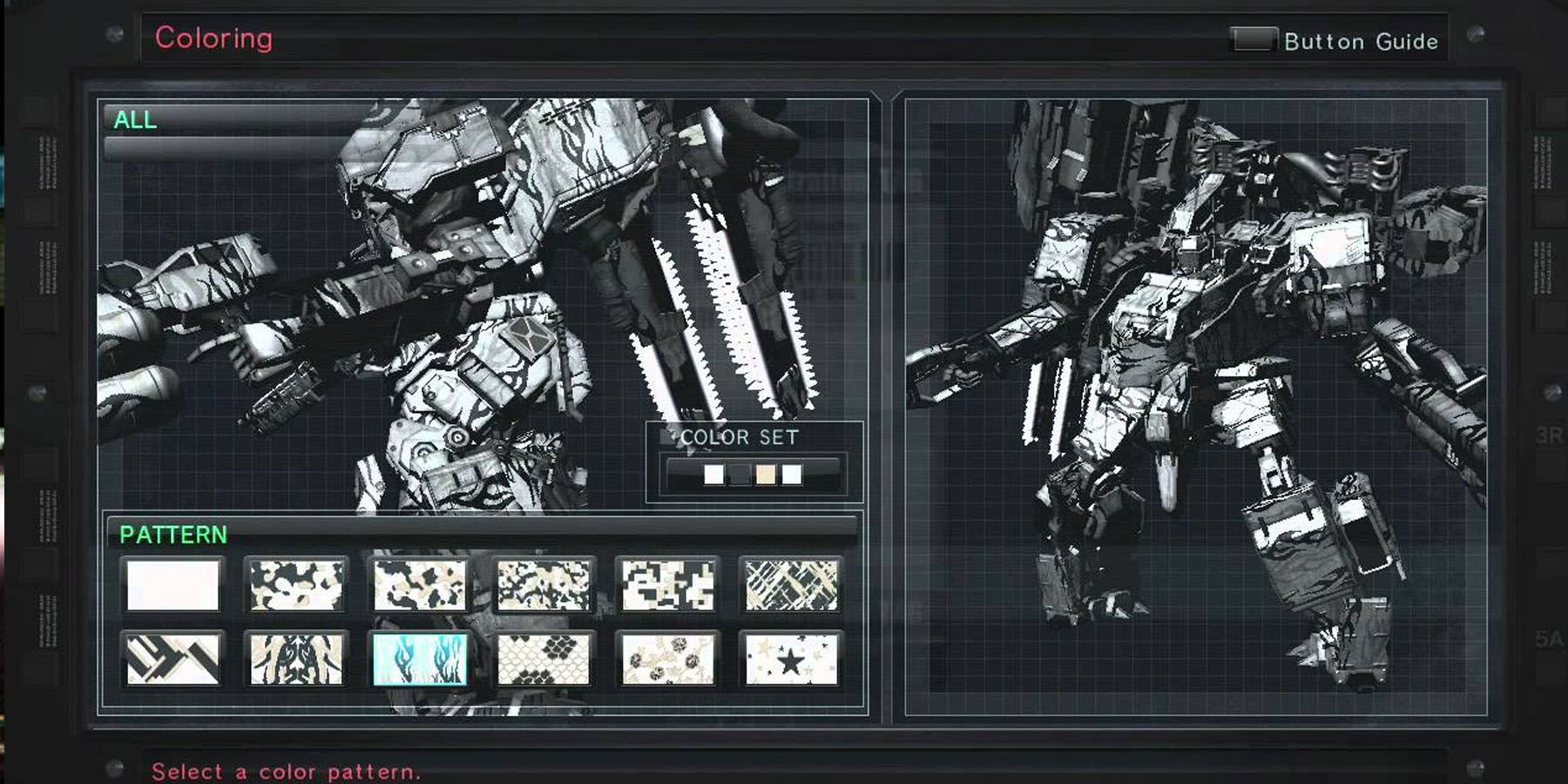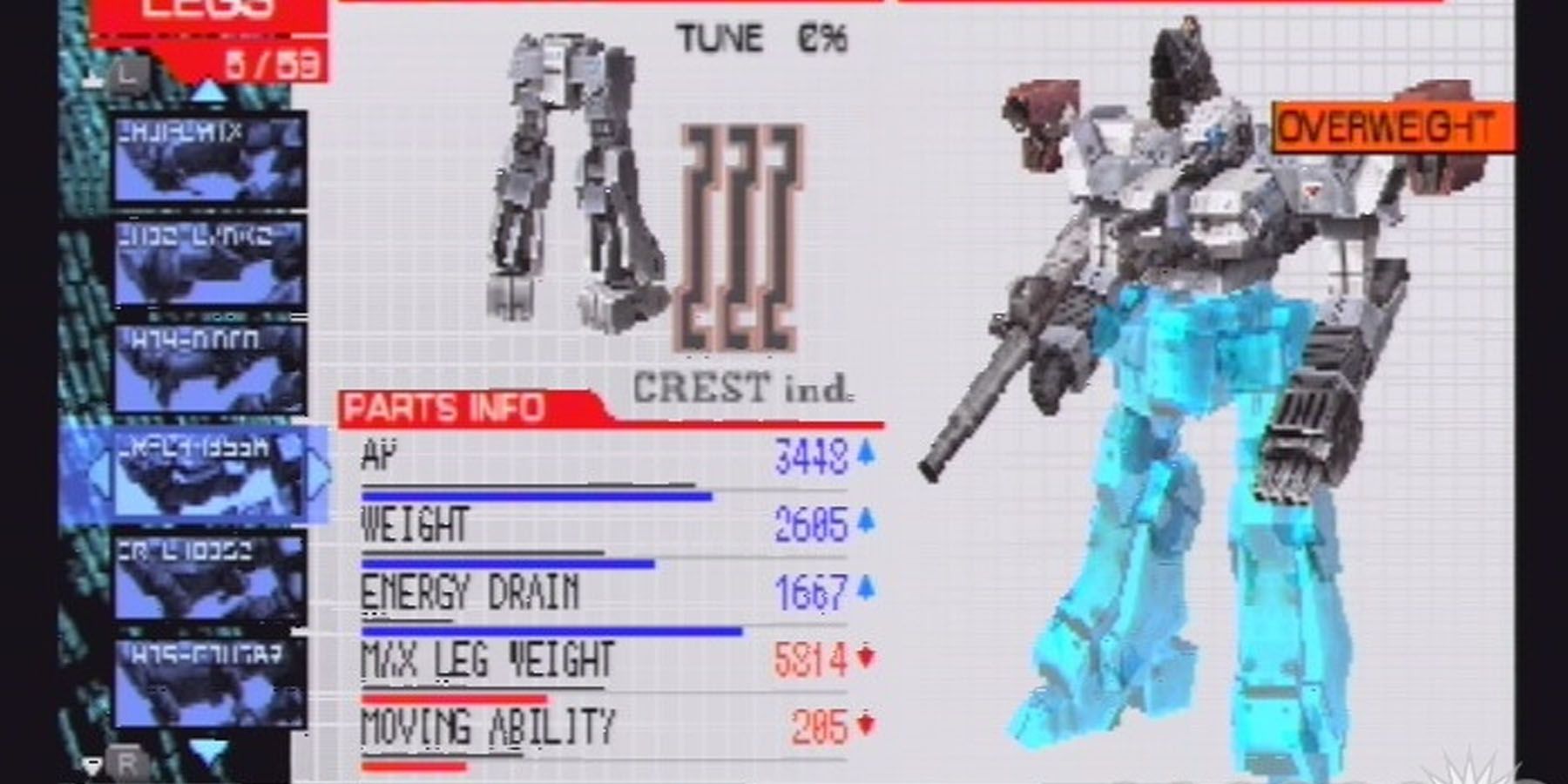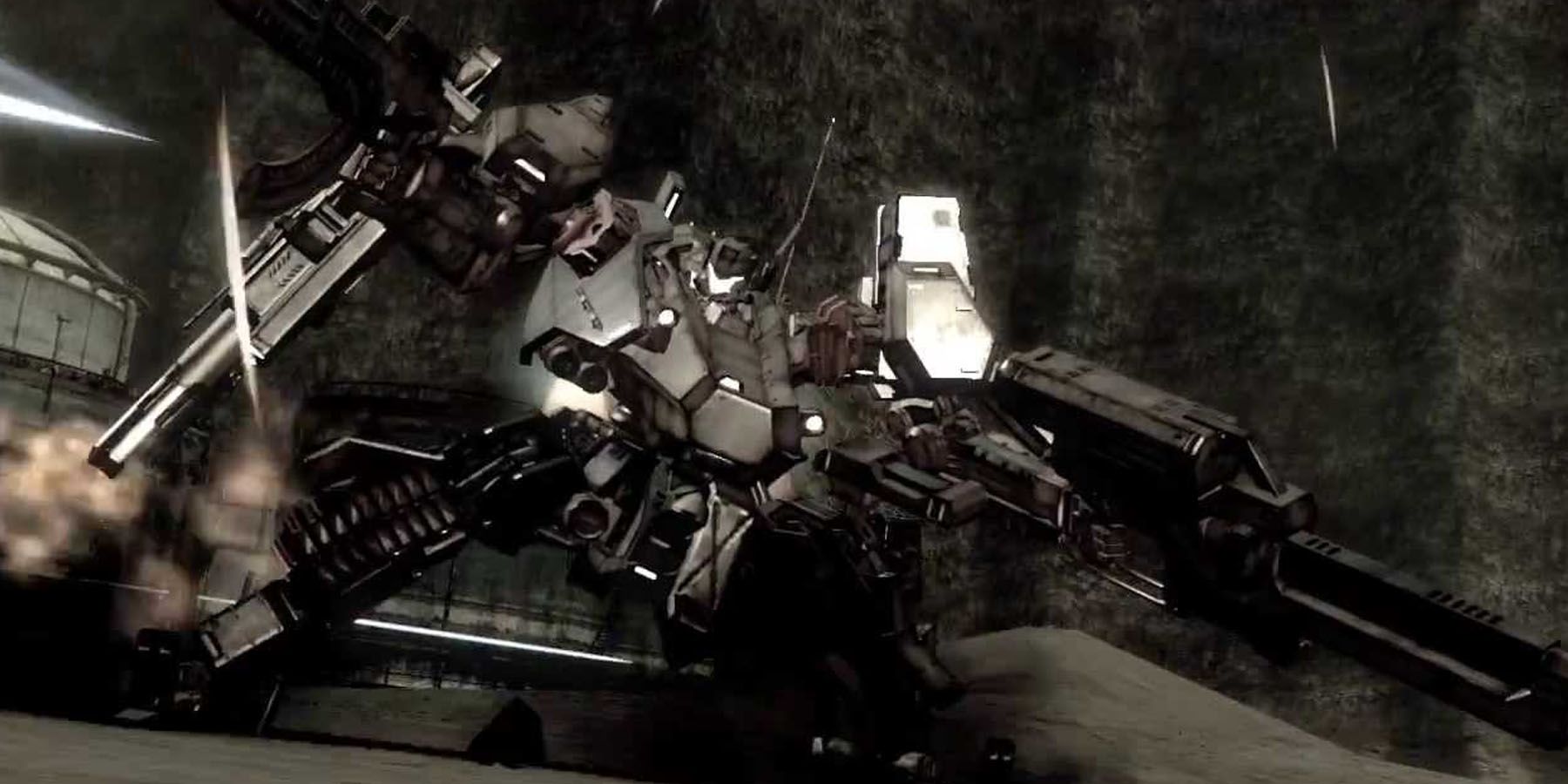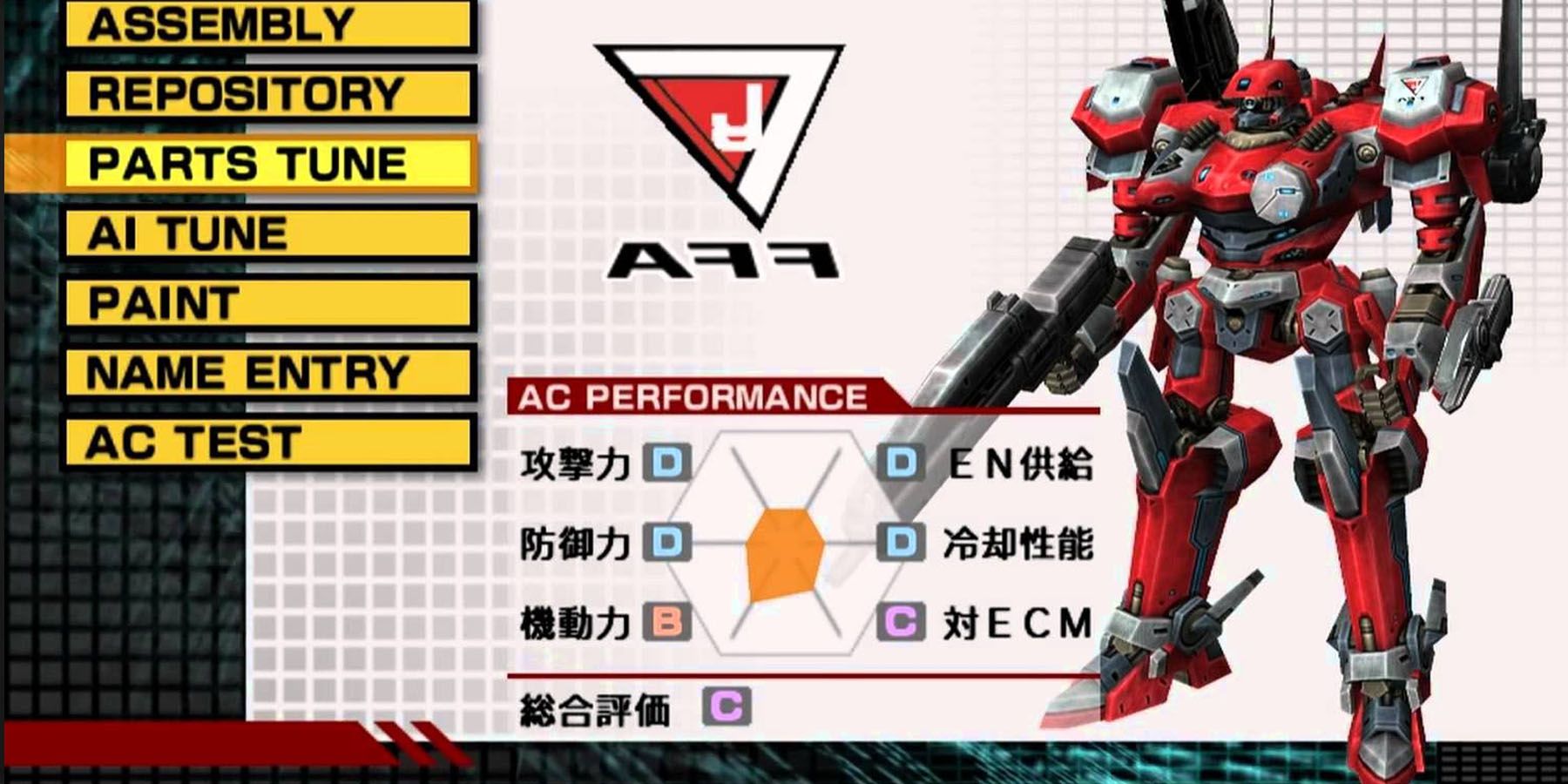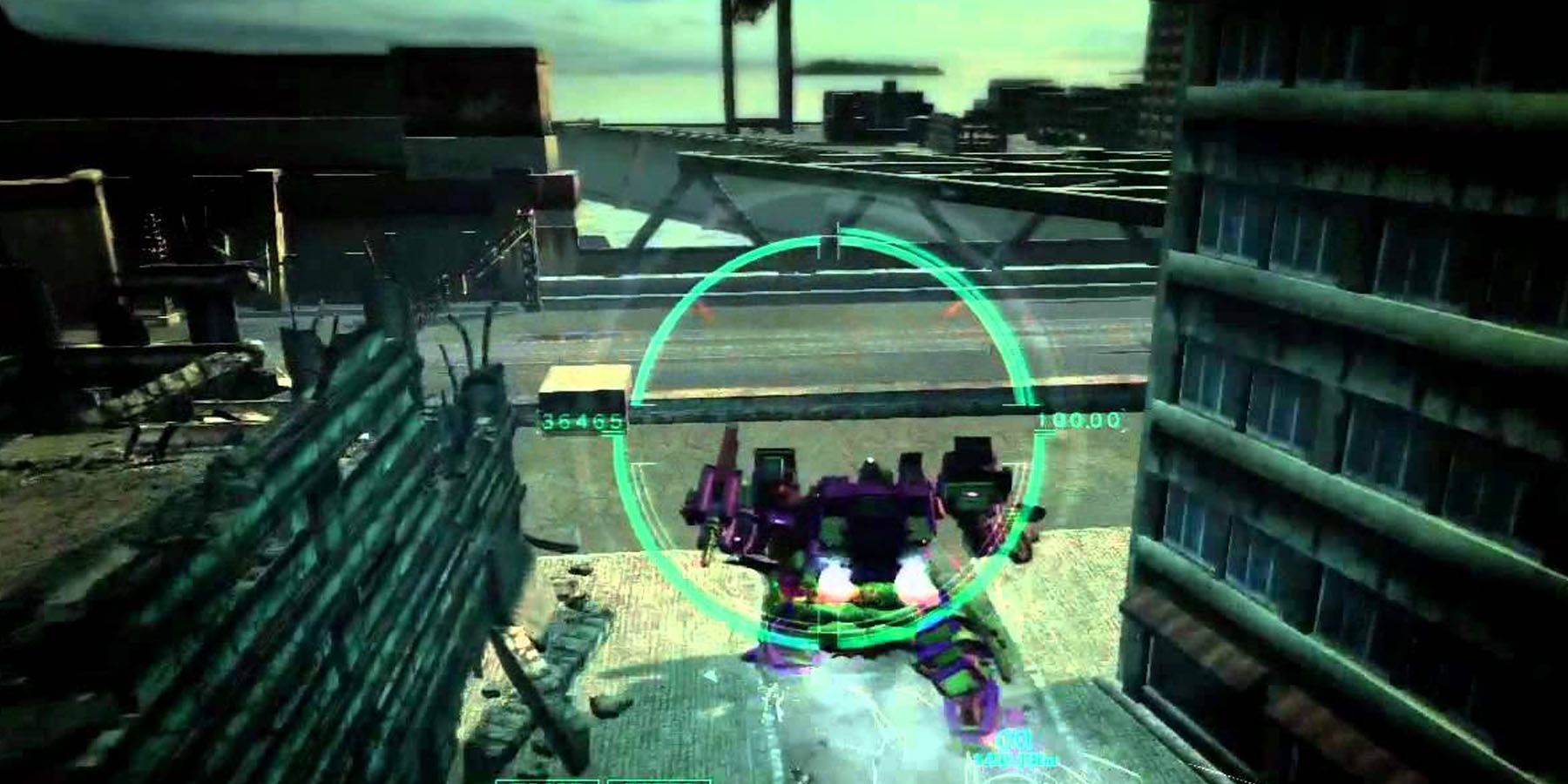When fans hear FromSoftware, chances are they’d immediately think about Dark Souls in all of its merciless glory. However, gamers with a penchant for mecha won’t necessarily remember Dark Souls with FromSoftware, as its Armored Core franchise is equally as immersive as the popular action role-playing title. Contrary to Dark Souls, Armored Core will have players construct and pilot their own mecha. And unlike Gundam, Armored Core really amps up the simulation game to 100.
At its center, Armored Core titles might take place in different settings, but all of its games are equally known to be quite enjoyable with the level of depth they provide regarding customization and gameplay. However, just what should newcomers know about this iconic mecha franchise?
8 Souls But With Mecha Isn’t A Far-Off Description
Fans of From Software today would likely remember the devs for works such as Demon’s Souls, the Dark Souls franchise, or even the upcoming Elden Ring. As such, players grabbing any Armored Core game for the first time would recognize several similarities to any Souls games given the sheer technical demand in the mecha title, and such a comparison isn’t that far-off.
However, it’s interesting to note that Armored Core came more than a decade before Demon’s Souls (2009), making the mecha series part of the framework that helped From Software create their acclaimed branding of a high skill ceiling for their games.
7 Challenging For Realism’s Sake
More often than not, a newcomer to Armored Core may be able to create a build that looks perfectly badass in the hangar but ends up non-functioning in combat - be it because of the wrong mixture of components, overloading parts, and other internal failures. These might seem a bit too specific for a mecha game, but this appeal of Armored Core.
It doesn’t help that controlling Armored Cores feel clunky at the onset on purpose, especially since the point of the series is to depict a somewhat realistic version of mecha fighting. Unlike the Souls games that rely heavily on timing to “counter” an opponent’s rhythm, Armored Core relies a lot on players understanding how their builds work to adjust in combat against much faster, more balanced Armored Core builds.
6 Mecha Customization To The Extreme
Fans who get to play their first Armored Core game might realize that a lot of its customization elements are similar to other mecha titles, such as Gundam Breaker of the Gundam franchise. However, fans who take their first Armored Core for a test drive might realize that the minutest of their decisions regarding part choices and synergies may actually affect the way their mechas perform in battle.
This is because Armored Core emphasizes both mecha combat and mech customization. Various parts affect various small functions of the mecha, including how fast boosts and jumps could be (and if they could jump at all), as well as how fast their parts overheat.
5 Individual Builds Often Matter Per Mission
Regardless of the Armored Core game, players almost always have to be both the pilot and the builder of their own mecha. And due to the varying nature of each mission, there’s always the possibility of players having to customize some part of their Armored Core to accommodate a mission’s needs. This puts heavy emphasis on the customization aspect of the mecha title, unlike other games where players can just maintain their “favorite look” all the time.
For fans of the mecha genre, this continuous customization mechanic gives a more personal experience to Armored Core missions. Due to the open nature of levels and the straightforward objectives, Armored Cores often get adjustments depending on terrain, the kind of enemies faced, or even the speed needed to clear a level.
4 Precision AI For Autonomous Combat
One feature unique to the Armored Core franchise is its option to facilitate AI to control mecha in combat. Introduced first in Silent Line: Armored Core, this feature allowed players to assign specific commands to Armored Cores - allowing them to fight autonomously and adjust strategies based on various situations. This is similar to the Gambit System introduced in Final Fantasy 12, only this time around Armored Core dabbles into sci-fi instead of fantasy.
With this AI combat system, Armored Core players can test the efficiency and potential of their builds if an AI has complete control of the Armored Core and can fully use the game’s mechanics based on the parameters of the commands. This adds another layer of technical difficulty to Armored Cores, as players need to balance not just mecha parts and systems, but also potentially the AI.
3 A Choice Of Three Main Timelines
With the first Armored Core game released in 1997, it makes sense for the series to have a hefty timeline under its belt across 13 main titles and seven various spin-offs. However, it’s important to note that the series technically has three main timelines, each depicting a unique version of the post-apocalypse that would force people to rely on Armored Cores to do their business:
- Original Timeline: Set in the events of 1997’s Armored Core up to 2001’s Armored Core 2: Another Age, the original continuity explores something known as the Great Destruction that forced humanity underground. Corporations have started to become more powerful than governments, with them and other groups employing ACs to do their dirty work.
- Rebooted Timeline 1: The first reboot began with 2002’s Armored Core 3, which explores a global nuclear war being the cataclysm that drove humanity underground. This time, an AI called the Controller has been controlling humanity, except a few centuries later when its continuous erosion forced humanity to find new hope of life on the surface. Again, corporations rule the world, with ACs doing missions for them.
- Rebooted Timeline 2: 2006’s Armored Core 4 rebooted the series again, this time Earth’s corporations having seized full control over the world and have now begun warring with each other for control over various territories. Unfortunately, this war also posed a threat to eliminate humanity due to the war’s impact on pollution.
2 Spinoffs Add A Breather For The Post-Apocalypse
Players who feel a bit overwhelmed with the post-apocalyptic setting of Armored Core don’t necessarily have to get stuck with this kind of plot, either, as some of its spinoffs are also set in alternate timelines or have more “passive” settings that focus more on Armored Core action compared to the game’s overarching storyline.
One of the most recognizable spinoffs of the Armored Core series would probably be Armored Core: Formula Front, a game for the PlayStation Portable that would have players construct Armored Cores and have the option to program their AI in a bid to help them win competitions against other Armored Core Teams. Similarly built is Armored Core: Nine Breaker, removing the emphasis on story missions and instead focusing on Armored Core fights in Arena Mode.
1 Solidified From Software’s Rep In Making Mech Games
It’s actually thanks to Armored Core that From Software began shifting its focus from standard RPG games to a full focus on creating mecha titles. After Armored Core in 1997, they also released the mecha title Frame Gride for the Sega Dreamcast, although to mixed reviews. However, the team also eventually released mecha titles for the Xbox such as Murakumo: Renegade Mech Pursuit in 2002 and Metal Wolf Chaos in 2004.
Banpresto would also enlist the help of From Software to create the cross-franchise mecha title Another Century’s Episode, with From Software being a standout choice precisely for their work in the Armored Core franchise.
A rumored Armored Core game from FromSoftware is reportedly in development.

